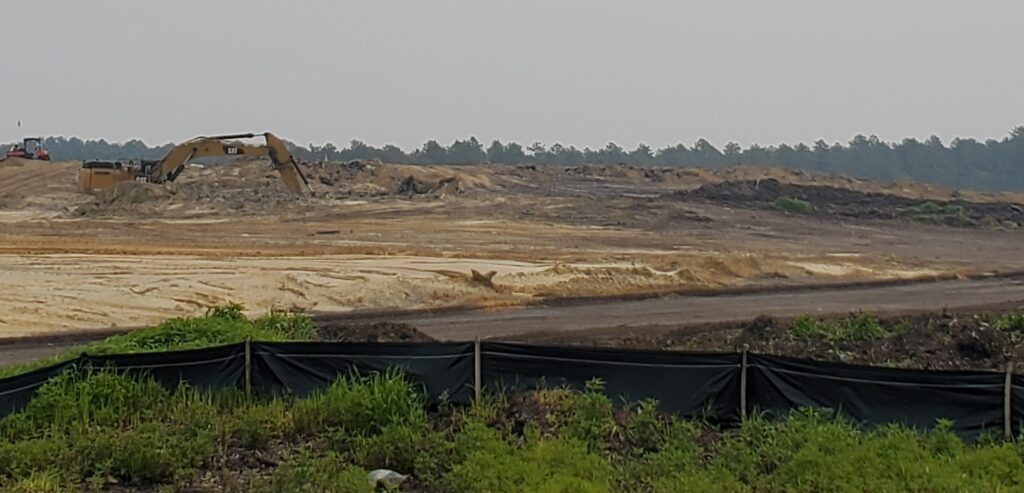
New Jersey had been experiencing dry conditions last month as indicated by the Keetch-Byram drought index (KBDI). The KBDI is a continuous reference scale for estimating the dryness of the soil and the duff layers in our woodlands. In addition, the NJDEP’s DWM&S Rainfall Data Acquisition webpage offers near real time rainfall accumulation. As erosion control specialists, staff at Ocean County Soil Conservation District are aware of the high potential for dust on construction sites during times of drought.
When you hear the word “dust”, you may think of the layer of dirt, hair, lint, pollen, skin follicles or other residue covering surfaces within your home. The Soil Erosion and Sediment Control Standards define “dust” as “fine colloidal material”, which we know as tiny soil particles. This dust can accumulate on surfaces outside, such as roads, vegetation and water bodies, including local creeks, streams and rivers. Dust is extremely difficult to remove from water once it becomes suspended, leading to degraded water quality.
Natural surface barriers, such as trees, shrubs and groundcovers keep fine soil on the ground and hold moisture in the soil during times of dry conditions. Without proper precautions, active construction sites may be vulnerable to releasing dust once the natural surface barriers are removed. The New Jersey Soil Erosion and Sediment Control Standard for Dust Control addresses this concern. Staff at OCSCD require construction sites to minimize dust through the installation of mulches, temporary vegetation, and even spray-on adhesives. Another option provided within the Standards is to sprinkle the surface of haul roads until wet, applying stone, and installing barriers like snow fences to control air currents and soil blowing and deposition into local surface water resources.
It is important to prevent blowing and movement of dust from exposed soil surfaces, reduce on-site and off-site environmental damage, health hazards, and improve traffic safety by implementing the New Jersey Soil Erosion and Sediment Control Standard for Dust Control.
